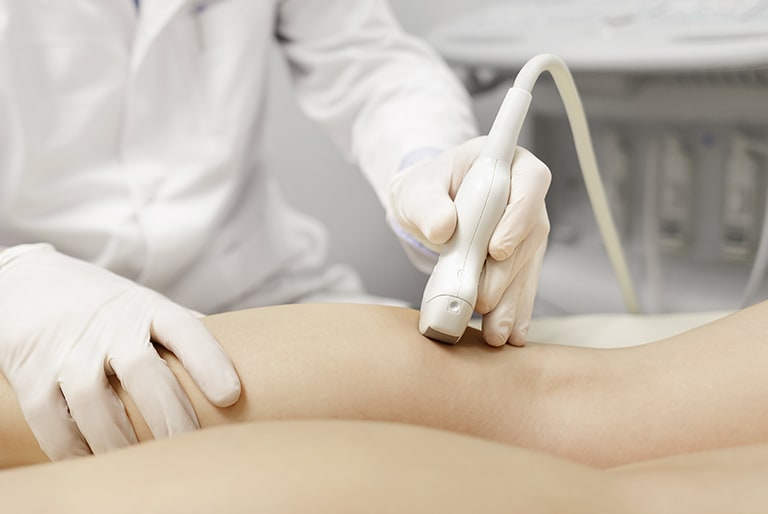When must varicose veins be operated on?
Are varicose veins harmless or do they always have to be removed? Many people ask themselves these questions when they discover the unattractive, twisted, bluish blood vein bulges on their legs. The phlebologist can give you the answer, as varicose veins are different with everyone and above all have varying degrees of danger.

Varicose veins: cosmetic or medical problem?
While some people can live quite happily with the beauty flaw, women particularly suffer in summer when they cannot wear airy skirts or short trousers. That is why a varices operation for women is often a cosmetic operation, which should make their legs flawlessly beautiful again. In fact, the removal of varicose veins is often wise from a medical standpoint in order to prevent other venous diseases.
When should you have varicose veins removed?
It is necessary to have a varices operation when
- there is varicosis of the trunk vein;
- there is varicosis of the lateral branch veins of the trunk vein;
- there is varicosis of the perforator veins, which join the superficial with the deep veins.
Ask your doctor to explain in detail whether in your individual case your varicose veins have to be removed, and which procedure is best suited to do that.
How is a varicose vein operation carried out?
Thanks to modern medicine, there are nowadays different methods for removing varicose veins. The aim of a varicose vein operation is usually to seal the affected vein through sclerotherapy, through laser therapy or through radiofrequency therapy.
Another method is stripping, in which whole veins, or only parts of them, are pulled out of the tissue. Whereas in the CHIVA method the veins are tied off at certain points with a thread, in order to prevent the reflux of the blood.
Many procedures are nowadays performed as an outpatient treatment. Some operations require a stay in hospital, albeit for just a few days. The operation takes between 30 and 60 minutes, depending on the procedure. As part of the aftercare the patients usually have to wear compression stockings for around six weeks, in order to lower the risk of bleeding and thrombosis. Movement is also a part of the therapy, because the vein pump must be activated after the operation.
However, a varicose vein operation does not mean that the varices problem is gone for good: the underlying weakness of the connective tissue still exists and cannot be cured. So varicose veins can also form at other points after the operation. That is why preventive measures such as exercise, a healthy diet, contrast showers, vein gymnastics, avoidance of prolonged standing and sitting, compression therapy or medicines for supporting the fluidity of the blood, like Veno SL® 300 are also necessary after an operation in order to prevent as much as possible the renewed formation of varices, or at least to delay it.
What happens if varicose veins are not treated?
Varicose veins are not just a temporary phenomenon on your legs. They are the consequence of a long existing venous insufficiency which will continue to advance if not treated. Because with the continuous expansion of the walls of your veins, and with it also the insufficient closing of your venous valves, your blood will continue to constantly drop down into your legs.
Even if you do not have any symptoms at the moment, varicose veins can become a serious health risk in some years. If your phlebologist does not deem an operation necessary at the moment, that can change with time. It is all the more important for varicose vein patients to have their veins examined regularly by a specialist and to actively strengthen their veins.This is because varicose veins can be the pre-stage of much more severe venous diseases, such as vein thrombosis, vein inflammation, venous bleeding or even open legs (Ulcus cruris), in which wounds no longer heal by themselves.